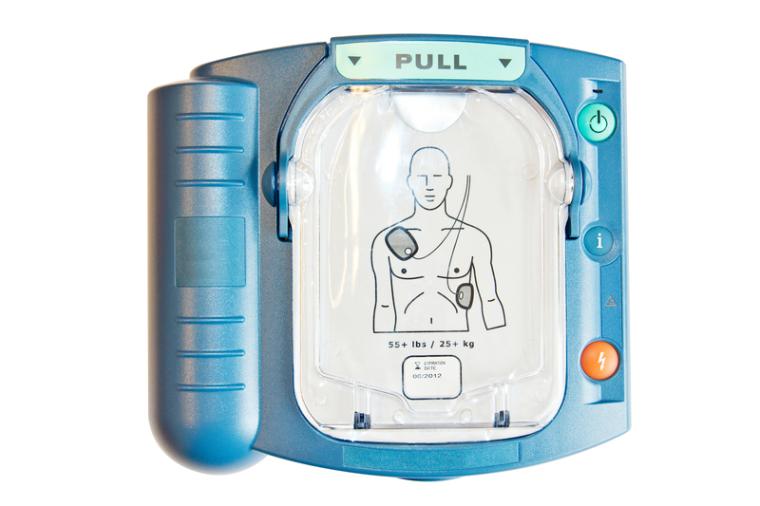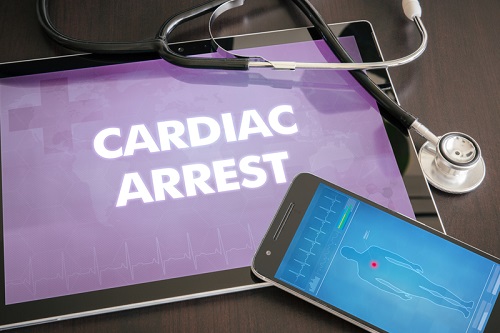
It was back in 2016 that SDM first covered the issue of commotio cordis or cardiac/chest concussion, the catastrophic condition that can result from a blow to the chest in sports. And at the time, it might have taken a back seat to other issues because it was comparatively rare.
Unfortunately, that issue has moved front and center in the case of Damar Hamlin, the Buffalo Bills safety who sustained a catastrophic injury in a recent Monday Night Football game against the Bengals.
But as the sports world waits for updates on Hamlin and his condition, the talk has turned, necessarily, to the potential for similar injuries in sports at lower levels.
Seven years ago, the National Operating Committee on Standards for Athletic Equipment (NOCSAE) gathered for its biannual standards meeting in Kansas City and presciently, one of the key topics included the advancement of the world's first chest protector standard for commotio cordis.
 Commotio cordis, NOCSAE explained, is an often lethal disruption of heart rhythm that occurs as a result of a blow to the area directly over the heart at a precise moment of heart's cycle, leading to sudden cardiac arrest. It is statistically rare, and victims tend to be youth (15 or under) and generally male. As such, it is a leading cause of sudden cardiac death in young athletes. However, Damar Hamlin is 24 years of age and a pro player, meaning the issue can arise at any time and at any level.
Commotio cordis, NOCSAE explained, is an often lethal disruption of heart rhythm that occurs as a result of a blow to the area directly over the heart at a precise moment of heart's cycle, leading to sudden cardiac arrest. It is statistically rare, and victims tend to be youth (15 or under) and generally male. As such, it is a leading cause of sudden cardiac death in young athletes. However, Damar Hamlin is 24 years of age and a pro player, meaning the issue can arise at any time and at any level.
While much attention was paid at the time to the risk potential in athletes who play baseball or hockey (the circumstances were innocuous at best – a low-velocity impact to the chest from a thrown or batted ball travelling usually at a speed of between 20-50 mph), it can also occur as a result of impact with any projectile and has been reported with softballs, lacrosse balls, hockey pucks, and in the case of Hamlin, a football helmet. Even in sports that are technically non-contact, such as basketball, racquetball or tennis, an ill-timed fall or a collision between two players, or between one player and a piece of equipment, is possible.
In short, any athlete being struck in the chest is vulnerable. It is not a problem that is tied to any current heart condition in the athlete, either. USA Baseball has noted, “The injured player does not have pre-existing heart disease and there is no structural damage to either the heart, chest cavity or chest wall as a result of the impact.”
With that background, what can event owners do to lessen the problem? Here are suggestions put forth by medical professionals.
Require Chest Protection for Athletes: Multiple chest protectors are available on the market. Regulations and recommendations may vary according to state and to sport, as well as to the level of play and the age of the athletes and it is likely that different products may offer varying levels of protection. Ultimately, it may fall to parents to decide whether youth athletes should wear them, or it may fall to coaches to require them. While there will always be plenty of people willing to argue that protection isn’t foolproof, physicians agree that cushioning the chest against a potential blow is better than not doing so at all, and that no level of precaution is ever wasted.
Have an AED (Automated External Defibrillator) at the Competition Facility – and in a place it can be easily reached at all times. However, professionals note that AEDs are only as good as they are immediately accessible in the event of an emergency; in a large complex, an AED that is located too far away from an incident (or is located in a locked office) is completely useless when time lost amounts to life lost. It behooves owners of large facilities to have more than one AED available and to have AEDs ready to go without delay.
Have Someone Willing to Use the AED: AEDs are user-friendly but individuals, particularly in the heat the moment, may be intimidated by them. Having onsite staff trained in their use is necessary as well.
Event Owners, Coaches and Officials Should Know Where AEDs are Located in Advance of the Tournament: In an emergency situation, there will be no time to ask. All those involved in a travel tournament should familiarize themselves with the facility and with the location(s) of emergency medical equipment.
Insurance May Not Come Into Play: John Sadler of Sadler & Company, Inc., who has written for SDM about insurance and risk management, had the following to say: “There is no specific language in General Liability policies which would impact whether or not a claim is going to be paid for commotio cordis. But of course, insurance carriers would want their clients to comply with best practices for the purchase of AEDs at certain types of facilities and staff training. Many state laws now require AEDs for certain types of facilities such as schools and health clubs. You need to do a google search to find out the latest in your area.”
In 2018, Sadler wrote a blog on the issue, in which he noted, “History shows that responding with CPR efforts within three to five minutes is critical. Studies indicate that the chances of surviving an incident of commotio cordis are enhanced if a shock from an AED)can be delivered promptly. Most ballparks don’t have AEDs, and those that do must have well-practiced procedures in place for the rapid use of the device. Otherwise, all is for naught.”
Note: Three to five minutes is the window mentioned. Ascertain that any AED can be on the field and ready for action in (or before) that time. Remember that even a call to 911 will result in a delay in treatment. Be ready to respond on the field.
Personnel Should be Trained in CPR: Even if an AED is available, coaches, officials, venue personnel and others should be trained in CPR and first aid.
Have Information on the Closest Hospital: While an ambulance should be called in the event of an emergency, those who are unfamiliar with the area may not be able to find the appropriate medical center to check on the athlete later.
While the use of an AED onsite at the athletic field or arena can allow for faster treatment of an injury, prevention of cardiac concussion is viewed as a far preferable alternative. Whether sports will do so, however, remains to be seen.
There has been an increasing push to have trained medical professionals onsite at youth and amateur sports events; however, many organizations have noted this is financially and logistically impossible. In January of 2015, proponents of a New York City bill tried to mandate putting doctors on the sidelines at games and practices for youth sports involving tackling; however, the bill ultimately failed because it constituted an expense most programs could not meet. And while telehealth has improved, nothing can take the case of precautions, nor of immediate response to emergencies.

